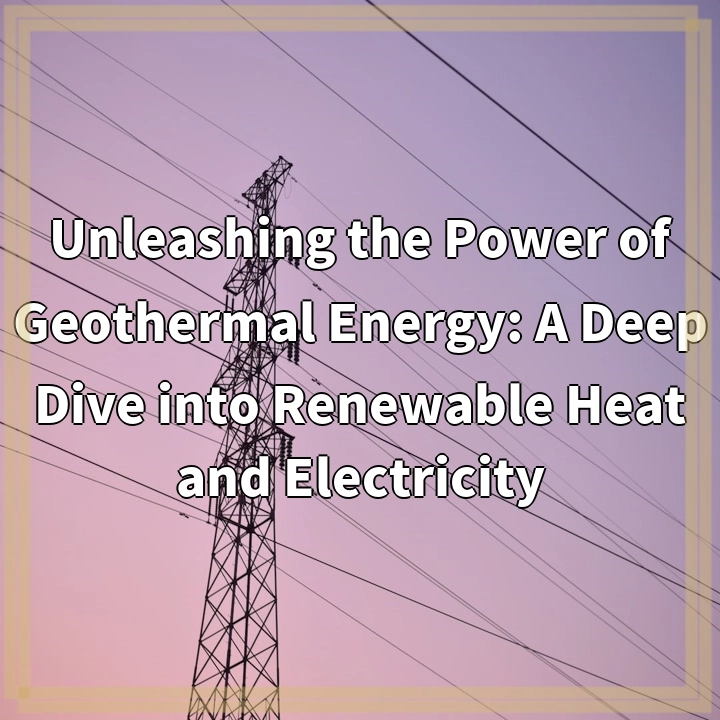
What is Geothermal Energy?
Geothermal energy is a form of renewable energy that harnesses the heat beneath the Earth’s surface to generate both heat and electricity. It taps into the natural heat reservoirs found in the Earth’s crust, allowing us to utilize this abundant and sustainable source of energy.
Real-World Problems Associated with Geothermal Energy
1. Limited Geographical Availability
One of the main challenges with geothermal energy is its limited geographical availability. The optimal conditions for geothermal power plants are typically found in tectonically active regions, such as Iceland, the Philippines, and parts of the United States. However, these areas represent only a fraction of the world’s total landmass, limiting the widespread implementation of geothermal energy.
2. High Initial Costs
The cost of setting up geothermal power plants can be quite high. Drilling deep into the Earth’s crust is a complex and expensive process. Additionally, the installation of steam turbines, generators, and other equipment requires significant financial investment. These high upfront costs can discourage the adoption of geothermal energy, especially in regions where conventional fossil fuels are more readily available and cost-effective.
3. Environmental Concerns
While geothermal energy is generally considered environmentally friendly compared to fossil fuels, it is not entirely without environmental concerns. The drilling process can release small amounts of greenhouse gases and other substances, such as sulfur dioxide and hydrogen sulfide, which need to be carefully managed to minimize their impact. There is also the potential for fluid injection and extraction to trigger seismic activity, although this is rare and can usually be mitigated.
4. Limited Technologies for Low-Temperature Resources
Geothermal resources with low temperatures (below 150°C) are considered low-grade and more challenging to extract energy from. While technological advancements have made it increasingly feasible to tap into higher temperature resources, such as those found in volcanic areas, there is still a need for further innovation and development of cost-effective technologies to harness the energy potential of low-temperature geothermal resources.
5. Water Usage and Potential Impact on Aquifers
Geothermal power plants require a significant amount of water for the extraction of heat and the generation of electricity. This water consumption can have an impact on local aquifers, potentially leading to a strain on water resources in regions that are already water-stressed. It is crucial for geothermal projects to employ sustainable water management practices to mitigate their potential negative impact on local ecosystems and communities.

Solutions to Real-World Problems Associated with Geothermal Energy
1. Expanding Geographical Availability
Efforts should be made to explore and harness geothermal resources in areas beyond the traditional hotspots. Technological advancements can potentially unlock geothermal energy in regions with lower temperature gradients, thus expanding the geographical availability of this renewable resource.
2. Investing in Research and Development
Continued investment in research and development is crucial to drive innovation and reduce the cost of geothermal energy technologies. This will help make geothermal power plants more economically feasible and competitive with traditional energy sources in a wider range of locations.
3. Addressing Environmental Concerns
Mitigating the environmental impact of geothermal energy can be achieved through implementing stringent drilling practices, monitoring and managing emissions, and employing responsible fluid injection and extraction techniques. Collaboration between industry stakeholders, scientists, and regulatory bodies is essential to ensure the best environmental practices are followed.
4. Developing Technologies for Low-Temperature Resources
Further investment in research and development is necessary to unlock the full potential of low-temperature geothermal resources. Development of cost-effective technologies that can efficiently extract energy from low-grade resources will help diversify the reach of geothermal energy and make it more widely accessible.
5. Sustainable Water Management
Implementing sustainable water management practices, such as utilizing treated wastewater or brackish water for geothermal operations, can help reduce the impact on local water resources. Additionally, responsible water use strategies that prioritize conservation and reclamation should be employed to minimize the strain on aquifers and ensure the long-term sustainability of geothermal projects.















